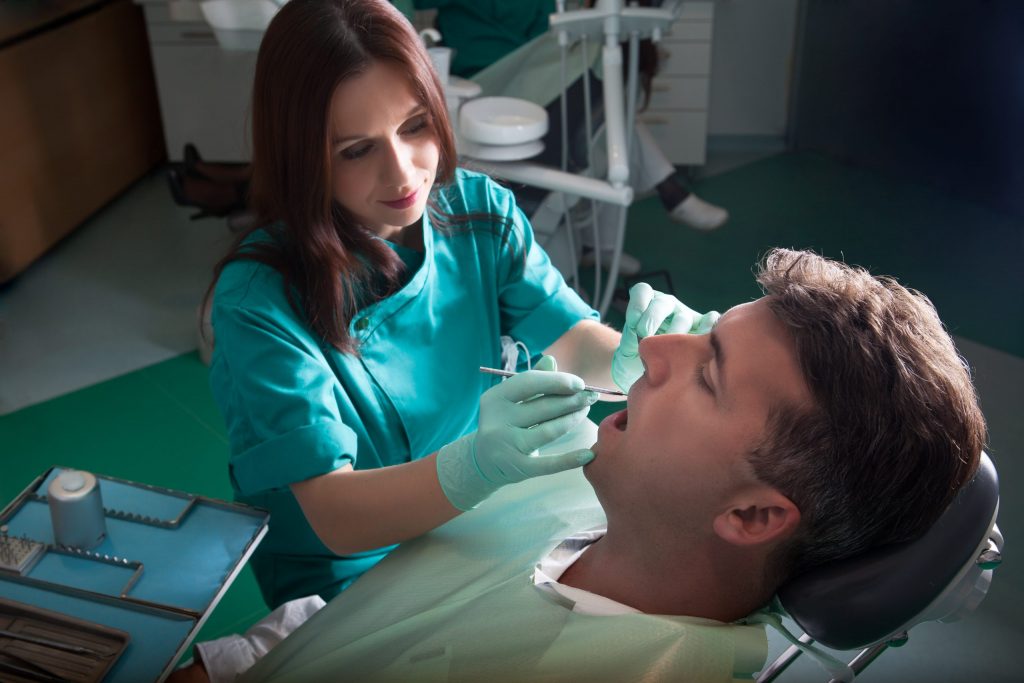Resource Library
Start Reading

A chipped tooth may seem like a minor inconvenience; however, chips and other fractures are leading causes of tooth loss. According to ADA Health Policy Institute polling, dentists are seeing chipped and broken teeth more frequently.

If you have chipped or broken teeth, you should take them seriously and receive treatment as soon as possible. Most people will visit a dentist if the fracture occurs at the mouth’s front, but doing so is just as important even if the fracture happens farther back.
Chipped tooth bonding is a common way to fix even a slightly chipped tooth. There are several ways to tell whether you have a chipped tooth, the different types of fractures that can occur, and to learn how bonding a broken tooth can help.
You may readily notice a chipped or broken front tooth. In other cases, determining your tooth’s status may not be such a straightforward matter.
Schedule an appointment with your dentist if you experience any of these symptoms:
You cannot treat or fix a chipped or broken tooth at home. The longer you wait to go to a dentist, the more difficult adequately repairing the tooth becomes.
Your teeth may have one or more of the following types of fractures. Your dentist will determine a therapeutic treatment based on the nature of the break.

Tiny cracks in tooth enamel are common in adult teeth and usually shallow. You should still consult your dentist about actions you can take to prevent further damage and maintain your teeth’s integrity.
A fractured cusp is a tooth’s chewing surface with a missing piece. This fracture may not cause you to feel much or any pain, but you may notice chipping on the tooth’s edge.
When the crack in your tooth extends vertically toward the root but not below the gum line, your dentist may be able to save the tooth using root canal therapy. But if the crack reaches below the gum line, the tooth cannot be saved and must be extracted.
When a cracked tooth goes untreated, it will eventually split into two or more sections. Endodontic treatments may be able to save some of the tooth.
These cracks originate from the root and extend toward the tooth’s chewing surface. Vertical root fractures often cause inflammation and infection of the surrounding gum and bone. Surgery may save a tooth, or extraction may be necessary.
A prompt diagnosis can make all the difference between saving teeth—whether through bonding a chipped tooth or some other procedure—and losing them.
In many cases, tooth bonding is a cosmetic method for repairing a chipped or broken tooth. Bonding for front teeth can lead to effective results because the process involves a composite resin that matches your teeth’s color. Dental bonding is not ideal for all teeth; it’s most effective on teeth with less direct biting and chewing, like the front teeth.
When bonding a fractured tooth your dentist will:

What are the pros of bonding a chipped tooth?
But consider the potential cons of bonding a chipped tooth, too:
If you suspect you have a chipped or broken tooth, it’s best to see a dentist right away.
At Penn Dental Family Practice (PDFP), we offer a wide range of treatment options for restoring your teeth. From chipped tooth bonding to placing crowns and more, our dentists know how to strengthen your teeth’s functioning while preserving and improving your smile’s appearance.
Make your appointment now by filling out our online form, or call us at 215-898-7337.